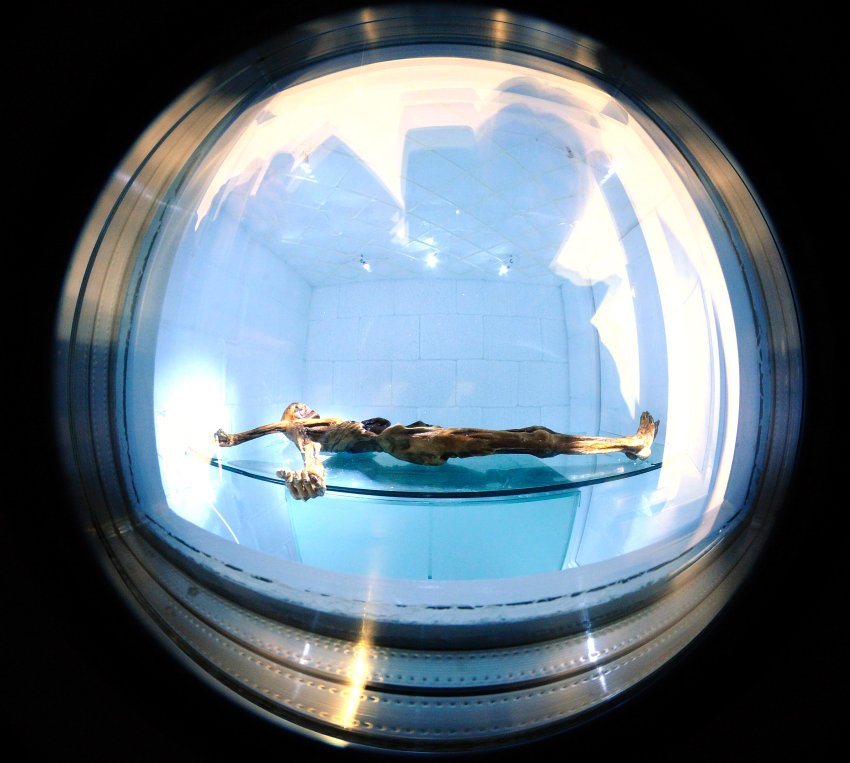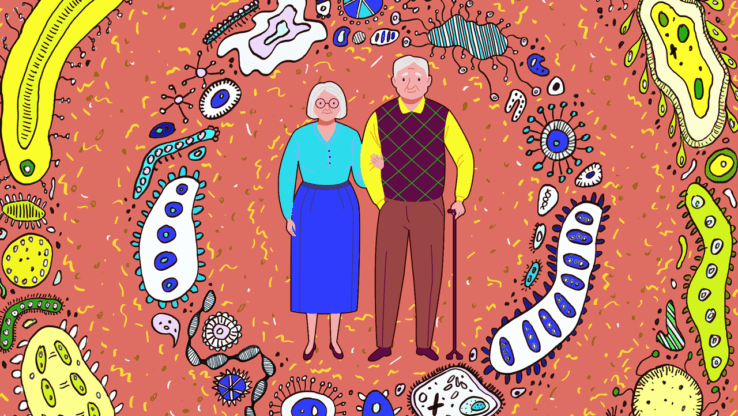Jan. 8, 2016
3 Bullets:
- Institute for Systems Biology collaborates with researchers worldwide to study pathogens in the stomach content and microbiome of the 5300 year old European Copper Age glacier mummy “Ötzi” and discovers a Helicobacter pylori pathogen genome.
- Ötzi harbored a nearly pure Asian-origin bacterial population of H. pylori providing key information as to population migration into Europe over the last few thousand years.
- Supported by proteome information gathered at ISB, the Iceman’s stomach was found to be colonized by a cytotoxic strain of H. pylori that triggered host inflammation immune responses.
By Dr. Robert Moritz
In a study published in the Jan. 8, 2016, issue of the journal Science, researchers from the Moritz group at ISB collaborated with a worldwide consortia headed by Prof. Albert Zink and Dr. Frank Maixner, of the Institute for Mummies and the Iceman at the European Academy of Bozen/Bolzano (EURAC) in Italy; Prof. Thomas Rattei, of the University of Vienna; and Dr. Rudi Grimm, of University of California-Davis to identify and sequence the entire genome of a Helicobacter pylori pathogenic strain of Asian origin in the stomach contents of the mummified 45-year-old male named Ötzi. H. pylori is a bacterium found in 50% of all humans today. This finding provides a theory that humans were already infected with this stomach bacterium at least 5000 years ago and its presence at the very beginning of history could well be true.
The identification of the H. pylori strain that Ötzi harbors is mainly observed in Central and South Asia today. “The recombination of the two types of Helicobacter may have only occurred at some point after Ötzi’s era, and this shows that the history of settlements in Europe is much more complex than previously assumed,” commented Dr. Maixner. Since bacteria are usually transmitted within ones family, the history of the world’s population is closely linked to the history of bacteria. Up till now, it had been assumed that Neolithic humans were already carrying this European strain by the time they stopped their nomadic life and took up agriculture. Research on Ötzi, however, demonstrates that this was not the case. 
Using high sensitivity proteomics techniques, researchers in the Moritz lab applied a multi-step solubilization and fractionation protocol to identify human proteins in the stomach metaproteome, of which are either highly expressed in the stomach mucosa, or present in the gastrointestinal tract and involved in digestion. Proteins involved in immune processes observed in the Iceman stomach proteome are normally primarily expressed in neutrophils, are involved in the inflammatory host response, and correlate well with proteomes of inflamed gastric tissues of modern H. pylori–infected patients. Thus, the Iceman’s stomach was colonized by a cytotoxic H. pylori–type strain that triggered host inflammatory immune responses. “We can say that he most probably had a quite severe H. pylori infection in his stomach,” Prof. Zink stated.
From the Moritz lab, Drs. Michael Hoopmann, Janice Hallows and Ulrike Kusebauch, used their expertise in biochemistry, mass spectrometry and computational bioinformatics, to support the consortia to develop methods for the broad identification of proteins extracted from this ancient sample of a mixture of food remnants, human proteins and microbiome ecologies within the stomach of Ötzi. The difficulty in extracting proteins from this desiccated sample was exacerbated due to the degradation of proteins of both the stomach environment and to sheer time. However, the team at ISB found that proteins were surprisingly preserved over the 5300 years that Ötzi was entombed in glacial ice high in the Ötztal Alps on the border of Austria and Italy. In-depth analysis of stomach proteome supported the evidence of severe pathogen infection and ongoing analysis will reveal more aspects of the final days of Ötzi’s life.
The intense study of Ötzi over time is revealing many challenges to life in the European Copper Age. In addition to the H. pylori infection, Ötzi was also known to be infected with Lyme disease, which was discovered through the analysis of Borrelia genome within Ötzi samples. His challenges did not cease at just pathogens. Ötzi had worn joints and terribly worn and infected teeth. He likely was killed from falling after being shot in the collarbone by an arrow. The study of Ötzi is continuing and will hopefully reveal more details of his life and provide new data on life 5300 years ago.
Link: http://www.sciencemag.org/content/351/6269/162.full
Journal: Science
Title: The 5300-year-old Helicobacter pylori genome of the Iceman
Authors: Frank Maixner, Ben Krause-Kyora, Dmitrij Turaev, Alexander Herbig, Michael R. Hoopmann, Janice L. Hallows, Ulrike Kusebauch, Eduard Egarter Vigl, Peter Malfertheiner, Francis Megraud, Niall O’Sullivan, Giovanna Cipollini, Valentina Coia, Marco Samadelli, Lars Engstrand, Bodo Linz, Robert L. Moritz, Rudolf Grimm, Johannes Krause, Almut Nebel, Yoshan Moodley, Thomas Rattei and Albert Zink



 isbscience.org/research/otzi-the-iceman-helicobacter-pylori-pathogen-found-in-stomach-contents/
isbscience.org/research/otzi-the-iceman-helicobacter-pylori-pathogen-found-in-stomach-contents/












